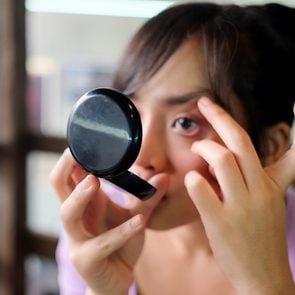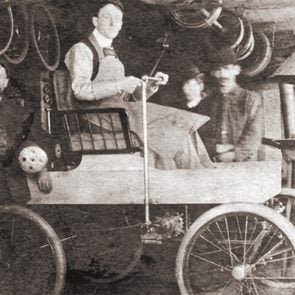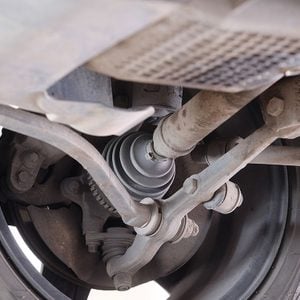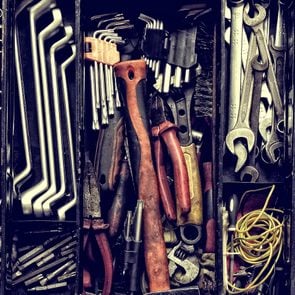I recently found myself agonizing over a financial decision. I had three options, and having spent considerable time researching them felt reasonably informed, but I was still not fully confident in which to choose. So when I later saw a financially savvy acquaintance at a party, I decided to ask for her advice.
As the conversation deepened, however, I felt my stomach tighten in frustration. While I’m sure my friend wanted to help, her advice was immediately off the mark. She didn’t ask me questions or consider how my goals might differ from hers. She simply told me what she would do, and I quickly found myself tuning out her monologue. The exchange left me feeling discouraged.
When we ask someone for advice, we look for a range of responses: a thoughtful and objective perspective, information to fill a knowledge gap, guidance from someone we trust. Done well, the exchange can benefit both parties, adding nuance to each person’s thinking and strengthening their bonds.
Bad advice, on the other hand, can harm relationships and make a tough decision even tougher. The worst advice-givers can invite second-guessing, undermine your values and lead you astray. Even the most well-intentioned bad advice can leave us feeling exasperated, misunderstood and even more confused. Luckily there are things we can all do to avoid giving—and receiving—bad advice.

How to spot bad advice
Consider your “ask”
To help head off bad advice, get clear on your needs. Are you asking someone to help you think through options you might take to resolve a problem? Are you asking someone to provide advice as your friend or as an objective observer? Do you want help with something that’s closer to instruction or coaching—like how to plant a fall garden or ensure you get the next big promotion at work? Communicating both your problem and your expectations will help your advice-giver approach your questions thoughtfully and with a goal of their own in mind.
Next, make sure you’re intentional about whom you ask, and consider if you need a range of opinions or one well-informed perspective. Don’t be
afraid to get creative with whom you ask, and don’t assume you know everyone’s expertise. When you receive the advice, listen to your body. Are you tensing up or resisting? It could be a sign that the advice that’s coming your way isn’t right for you—or it could mean someone is challenging your own biases and assumptions. Take the time to check in with yourself on which it is.
Are they engaged?
David Eddie was an advice columnist for nearly two decades. In that time, he learned that good advice-givers ask questions that help them better understand where you’re coming from and what your goals are. They don’t assume they know the answer—or that you have the time, resources or ability to approach the challenge in the same way they would. “You want someone who’s going to drill down into the problem with you and take the time to understand the shape of it,” he says.
I wish my friend and I had talked more about my financial situation before she delivered her advice. She may have given different tips if we’d been able to walk through my goals and concerns, which options I was considering, and who else I had consulted. Don’t assume your advice-giver is being self-centred. It can take time to formulate smart, empathetic questions—and a run-in at a party, for example, may not be the best setting for true consideration.

Do they understand your values?
When it comes to human relationships, things can get murky. Our different backgrounds, beliefs and personal philosophies mean there often aren’t one-size-fits-all solutions. When advice-givers assume that what’s best for them is also what’s best for you, or that their advice should always guide you to what’s most socially or culturally acceptable, problems can arise.
Sahaj Kaur Kohli knows this firsthand. When she was 30, the New Yorker and first-generation American founded Brown Girl Therapy, an Instagram mental health community for children of immigrants that now has over 200,000 followers. But when Kohli decided to go back to school to become a clinical mental health counsellor, she was advised to delete her social media accounts and try to remove information about herself from the Internet. The advice-giver felt it might interfere with her new career. But Kohli disagreed.
“It felt like a rejection of what I wanted to do with my life,” she says. Kohli pinpointed generational and racial differences in how she and the other person thought about mental health and therapy. Whereas her advice-giver saw her social media presence as a career blocker, Kohli believed it was an important way for her to build a community. She saw no reason to hide her lived experience; in fact, it was an asset.
While Kohli ultimately ignored the advice, she wishes she’d asked herself if the other party understood her values before entertaining—and fretting over—their advice.
Trust yourself
Personally motivated advice is usually pretty easy to spot. A parent may encourage a certain university path because they believe it brings more prestige or financial independence. A friend may advise their secret crush to leave their current partner. It’s harder when people don’t recognize their own underlying biases.
That’s why Eddie often gathers a range of perspectives. He calls his group of advice-givers The Panel, and it’s made up of his wife, mom and some friends and colleagues. Their advice helps him see different sides of sticky issues—pushing him to consider different angles and outcomes. But in the end, he’s the one who makes the decision. “I believe in the saying, ‘Seek the advice of many, but follow your own counsel,’” he says.
In other words: trust your gut. Kohli subscribes to the same approach for herself and her clients. One of the biggest lessons she’s learned as a mental health professional, she says, is that everyone is an expert on their own life. She sees her role as asking questions to help a person get the perspective they need to make a choice—even if those around them may disagree with it. Now that’s good advice.
Now that you know how to spot bad advice, find out how to rebuild self-esteem after your confidence has been shaken.
Kimberly Macurdy has always had trouble seeing things. She started wearing glasses as a young child, and her prescription became progressively stronger as she grew up. Over the last few decades, the 57-year-old mother of three performed so poorly on eye exams that optometrists, in disbelief, would ask her to cut it out and start paying attention.
In 2008, a sudden worsening of her eyesight caused Macurdy to suspect it was more than run-of-the-mill vision loss. One day, sitting in the kitchen of her home just north of Houston, Texas, Macurdy couldn’t read the time on her microwave from across the room, even with her glasses on. At her job as a purchasing manager for a manufacturing company, she gradually had trouble focusing on spreadsheets that were right in front of her.
Macurdy’s optometrist couldn’t figure out what was causing her symptoms, nor could a series of experts—including an ophthalmologist, a retina specialist and an optics specialist—who examined her over the following year. A few doctors decided the likeliest explanation was that she was stressed and imagining her symptoms, given her familial situation: around the same time, the youngest of her three children, seven-year-old Braden, went to the emergency room three times for vomiting, fever and life-threatening dehydration. She was stressed, but she insisted she wasn’t making things up and kept pursuing fresh opinions.
In 2009, Macurdy saw Dr. Andrew Lee, the head of ophthalmology at Houston Methodist Hospital’s Blanton Eye Institute. One evening shortly before her appointment, as she was making her way to bed, she had a seizure, dropping to the ground and shaking uncontrollably. She somehow got up into her bed, where she later awoke in a puddle of her own urine.
Macurdy had suffered seizures before, but this one inspired her to write down a list of her other persistent health challenges: rheumatoid arthritis, an off-kilter gait, recurring fevers, and the vision problems, which had since gotten worse. She had started seeing things in double and experiencing eye tremors. “It felt like my eyes were bouncing around like a basketball,” she says.
Macurdy faxed her list to Lee, hoping that he could connect the dots. When she arrived at his office, she was impressed with his quick grasp of her situation. He wasn’t certain what was afflicting Macurdy, but he had a hunch: multiple sclerosis. MS causes the immune system to attack myelin, fatty tissue that coats and protects nerves, which often results in vision problems. People with MS are also more likely to experience difficulty walking. After the appointment, Macurdy sat in her car and cried—not over the chance that she had MS, but about the possibility of knowing what was wrong with her. “Finally,” she says, “someone agreed I was actually experiencing this.”
An MRI later confirmed Lee’s hypothesis: the myelination in Macurdy’s brain was abnormal, indicating that she likely had MS, although there is no definitive way to test for the disease. MS also has no cure, but Macurdy’s doctors prescribed her a raft of medications to treat symptoms and sent her home.
Around the time Macurdy began to get some answers, so did her son. An endocrinologist surmised that Braden’s health scares had been caused by a dysfunction of his adrenal glands, which produce the natural steroids a body needs to excrete excess potassium. The doctor prescribed him hydrocortisone to balance out the chemicals in his body.
Over the next five years, Macurdy and her son scraped by. Between the two of them, they had at least one medical appointment a week. Macurdy’s initial MS medications didn’t work as well as expected, so her doctors kept prescribing her new ones. At one point, she was taking 22 pills a day. She was over- whelmed trying to juggle both her own health and Braden’s. “Life was just ultra-weird,” she says. “I continued to fall off the ledge.”
In 2015, Braden landed in hospital again after another bout of vomiting. Macurdy pushed doctors to perform a number of additional tests to figure out why her son was sick—and in 2016, the results of a genetic test revealed Braden had a mutation in a gene that normally helps cells break down very long chain fatty acids. These acids insulate nerve fibres in the brain, but an excess of them was damaging the myelin throughout his body. The condition is known as adrenoleukodystrophy (ALD). It affects roughly one in 20,000 people, and there is no cure. Some carriers are asymptomatic and live full lives, while others die in adolescence. When Braden, then 15, asked doctors how long he’d live, they answered, “We don’t know.”

It was a devastating diagnosis, but it came with a silver lining. The next time Macurdy saw Lee, she casually mentioned Braden’s diagnosis. “He literally stopped his pen mid-stroke and said, ‘Wait a minute,’” says Macurdy. Lee wondered whether ALD, a genetic disease, could explain Macurdy’s illness. Indeed, in addition to having MS, a genetic test revealed that she had the same gene mutation as her son. The two mysteries had always been one.
ALD is linked to the X chromosome, which causes it to manifest primarily in men. “That’s why the son was showing all the symptoms and the diagnosis was so obvious in him,” says Lee. It’s far rarer for women to show signs of ALD because they have two X chromosomes—one can serve as a backup if the other is affected by a mutation. Female carriers of ALD, therefore, typically display milder symptoms, or none at all.
After her diagnosis, Macurdy scoured ALD support groups on Facebook and found a specialist at the Mayo Clinic in Rochester, Minnesota. That doctor now sees Macurdy and Braden at least once a year, performing tests and blood work to monitor warning signs and ensure the disease doesn’t progress.
After a lifetime of battling perplexing symptoms, Macurdy is relieved to know what she—and her son—are up against. “If I had not forced doctors to look, we really wouldn’t know,” she says. “But I’m no hero. A mom does what a mom has to do.”
Next, check out a medical mystery that will make you think twice about how you dress your bed.

My first time driving to the B.C. Vintage Truck Museum in Cloverdale, I took my 1929 Ford Model A Roadster pick-up truck.
I had seen a brochure for the volunteer-run museum, and walking around, I realized it was a hidden treasure. Dedicated to preserving the early history of trucking in British Columbia, the museum features 32 beautifully restored trucks dating from 1910 to 1977, along with memorabilia, gas pumps, tools, photos and the stories that go with them.
After my visit, I found one of the volunteers under my truck in the parking lot, fixing a tail light that had been hanging by a wire. Right then, I knew this is where I wanted to volunteer and contribute to my community, and I’ve been doing it for six years.
Our volunteers and trucks participate in over 25 community events each year, including fundraising events for the local food bank and the Christmas Hamper Program, Ride to Live for prostate cancer, and Show & Shine gatherings, where our trucks help raise funds for various charities.
A federal grant enabled us to provide lunch and museum tours to over 300 seniors living in care homes. So many of them remembered riding in or even driving these old trucks.

Collection highlights include our 1914 Four-Wheel Drive (above), used to transport troops in the First World War and later to clean snow off the B.C. electric railway lines. Our 1935 Dodge Airflow is extremely rare, the only one that was shipped to Canada.
Our 1955 GMC Firetruck (video above) is my favourite. A couple from the small town of Hope, B.C., took the train to Montreal, where it was built, and drove it right across Canada. It served their community until 2004. Their story is one of many we tell at the museum. Our trucks have hauled coal, carried dynamite and replaced the horses and wagons that hauled hay to dairy farmers.

Vintage trucks are so different from modern ones. They have manual steering, mechanical brakes, small fuel tanks and no air-ride suspension, just heavy springs. The tires were very narrow and often had inner tubes. My 1929 Model A has gravity-fed fuel, and the fuel tank is in the firewall, the battery hangs under the floor boards and the gears are not synchronized, so I have to double clutch. No problem leaving the keys in it—there are five things I need to do before I can start it!
If you enjoyed this look inside the B.C. Vintage Truck Museum, be sure to check out more hidden gems in B.C.
Spending an hour or two every three to four months performing basic DIY auto maintenance can save you hundreds or even thousands of dollars a year. In addition, proper maintenance reduces repair costs, improves fuel economy, minimizes breakdowns, extends your vehicle’s life and increases passenger safety. Although you can’t make every repair, or perform all maintenance on your vehicle yourself, here are a few things you can DIY.
Check/Replace Fuel Cap
Once its only purpose was to keep gasoline from sloshing out of the tank. No more. The fuel cap is an integral part of the emission control system. The fuel cap helps your fuel system maintain proper pressure by sealing the gas tank. A loose or cracked fuel cap can cause the CEL (Check Engine Light) to illuminate, drivability problems and poor mileage. Replace the fuel cap every 80,000 kilometres, or sooner, if damaged.
Replace Oxygen (O2) Sensor
An oxygen sensor monitors the amount of oxygen in a vehicle’s exhaust system after combustion. A dirty, damaged, or malfunctioning O2 sensor (or sensors) affects the air/fuel mixture, resulting in poor engine performance and reduced fuel economy. O2 sensors on pre-1996 vehicles have a recommended replacement interval of 80,000 kilometres. ODBII (On-Board Diagnostics, 2nd Generation—cars built after 1996) have a service life of 160,000 kilometres.
O2 sensor(s) are located in the exhaust system. The owner’s manual (or service manual, which is different from the owner’s manual) can help you pinpoint the sensor’s location and the specifics of the new sensor you need. Be sure to purchase the sensor specific to your engine.
Once the engine is completely cooled, spray the base of the sensor with penetrating oil. Disconnect the wire connector. Use either a 7/8-inch wrench or a special O2 socket and ratchet to remove the old sensor. Remember: lefty loose-y, righty tight-y. Use a soft-bristle brass brush or an old toothbrush to clean the threads in the exhaust system. Spread a little anti-seize compound onto the threads of the new sensor and install.
Replace EVAP Canister/Filter
The EVAP (Evaporative Emission Control) system prevents fuel vapours from escaping into the atmosphere. If an EVAP system canister becomes saturated with moisture, the filter cannot collect fuel vapours, causing excess fuel pressure. This can cause the CEL to light up, a loss of power and poor fuel economy. The EVAP canister/filter should last the life of your vehicle, but depending on the make and model, the filter should be replaced every 80,000 to 120,000 kilometres. On some cars you’ll need to replace the entire assembly if the canister becomes saturated.
After you locate the canister, disconnect the battery. Spray any attaching bolts with penetrating oil and disconnect the wire connector. Use masking tape to mark hoses attached to the canister before disconnecting them. Remove the mounting hardware and detach the canister. If the filter is replaceable, remove the retaining clips and install a new filter. Reverse these steps to reinstall the canister.
Check Under-Car Spare Tire Assembly
Nothing is worse than a flat tire. But it gets worse when the spare tire holder under your truck or SUV won’t budge due to corrosion caused by mud and road salt. First, read your owner’s manual to figure out how your spare-tire hoist system operates and to be sure you have all of the factory-supplied tools you need to lower the spare. To service the hoist, you’ll need a floor jack and jack stands to safely work under your vehicle. Spray the cable and hoist assembly with penetrating oil. Give it some time to soak into the assembly, then tap on the wheel with a hammer to help vibrate the penetrating oil into the assembly. Lower the vehicle onto the ground and try to lower the spare. If the assembly and cable are badly rusted or seized, they’ll need to be replaced by a pro.
Clean EGR Valve
The EGR (Exhaust Gas Recirculation) valve is another critical emission-control device. The EGR helps lower NOX (nitrogen oxides) tailpipe emissions by lowering combustion temperatures. This helps engines run cleaner and last longer. Although an EGR valve should last the life of your vehicle, a good cleaning every 80,000 kilometres is recommended. A dirty EGR valve, clogged with carbon, can cause rough idling, stalling, hesitation on acceleration, a failed smog/emission test and of course the dreaded CEL coming on. Use your owner’s or service manual to locate the EGR valve.
Purchase an EGR valve gasket(s) before starting. Disconnect the battery, disconnect the wire connector and spray the mounting bolts with penetrating oil. Use masking tape to mark hoses attached to the EGR before disconnecting them, then remove the mounting bolts and valve. Thoroughly clean all gasket mounting surfaces. Use a soft-bristle brush to remove excess carbon build-up. Spray or soak the EGR valve in carburetor cleaner or cleaner solvent specially designed to clean EGR valves. Scrub the EGR again and flush with clean solvent. Check the pintel valve—usually located on the underside of the valve, in the centre—it should easily move up and down after cleaning. Install a new gasket and reverse these steps to reinstall the valve.
Performing regularly scheduled maintenance and making timely repairs will save you money, ensure your driving pleasure and safety and help prevent other future costly repairs.
Next, check out the most common car problems—and how to fix them yourself.
Halloween and jack-o’-lanterns go together like Thanksgiving and turkey. The ghoulish faces carved into pumpkins certainly add to the holiday’s spook factor, but gourds weren’t the first scary-looking produce to grace people’s doorways. Here’s everything you didn’t know about the history of Halloween jack-o’-lanterns.
The origin of carving pumpkins stemmed from an Irish folk tale that started in the 17th century, according to Boston.com. A man named—you guessed it—Jack managed to trick the Devil twice and made him promise not to take his soul, according to History.com. When Jack did die, a dishonest man like him couldn’t make it into heaven, and the Devil didn’t want him in hell either. The Devil banished Jack with nothing but a burning coal, which the man put into a carved-out turnip. As legend has it, Jack is now cursed to wander the Earth forever, and became known as “Jack of the lantern,” or “Jack o’ lantern.” Spooky stuff! Discover how Halloween is celebrated around the world.
Across the British Isles, people would carve lanterns like Jack’s, according to English Heritage. Irishmen and Scots generally used turnips or sometimes potatoes, while beets were common in England. They hoped that by placing the vegetable lanterns in doorways, the faces would scare away evil spirits like Jack. (Try these free pumpkin carving stencils to take your jack-o’-lanterns to the next level!)
After rains cut UK #pumpkin crops, people are going back to carving #turnips: https://t.co/GlEyM9yvoi via @aishagani pic.twitter.com/SW5AuPsN20
— Rainforest Alliance UK (@RnfrstAll_UK) October 27, 2015
When immigrants came to North America in the 19th century, they brought their tradition with them. But they soon realized pumpkins, which are native to North America, were easier to carve than the stem and root vegetables they’d used before.
Thanks in part to how easy it is to carve a pumpkin, jack-o’-lanterns have become more and more elaborate. Now that you know the history of Halloween jack-o’-lanterns, learn 10 tricks for the best jack-o’-lanterns ever.

The bad news first: Canadians are sleeping less than they should. One in three of us don’t get enough rest, and, according to a 2018 Statistics Canada report, our nighttime insomnia symptoms jumped by 42 per cent over eight years. Chronic stress and a more sedentary lifestyle—both of which have increased since the beginning of the pandemic—are two reasons for that.
If you don’t get enough sleep, the negative effects on your health can be profound. Once you reach your 50s, if you’re sleeping less than the recommended seven hours a night, your risk of developing dementia jumps by 30 per cent. That is, if you make it to that point. Inadequate sleep also increases the risks of heart attack, stroke, hypertension, obesity, diabetes and other health issues.
On the flip side, a restorative sleep is good medicine, a natural elixir that far exceeds the benefits of any pill. And getting enough keeps you mentally sharp during the day, better able to deal with life’s stresses and conflicts.
The good news? We spoke to the experts and did the research to reveal how to fix your sleep schedule, starting tonight.
Learn How to Get Rest When Stressed
Worries about work, health and finances, as well as stressful life events, such as job loss, divorce, major illness or the death of a loved one, are all common causes of insomnia. In fact, more than 36 per cent of Canadians who don’t get enough sleep report suffering chronic stress, according to the Public Health Agency of Canada. This happens because, even if your body is ready for rest, stress causes your brain to go on high alert. That, in turn, triggers the release of hormones like adrenalin and cortisol and increases your blood pressure and heart rate.
“It doesn’t matter how tired you are,” says Dr. Ram Randhawa of UBC Hospital’s Leon Judah Blackmore Centre for Sleep Disorders. “If you are in a room with a tiger, you won’t fall asleep.”
Thankfully, the physiology of how stress disrupts sleep points to effective, non-pharmaceutical antidotes. For one, you can try writing down a list of pressing problems and worries before going to bed. Give yourself time to reflect, process and work out next steps or solutions. Then let those worries go so you don’t ruminate into the night.
Once you’ve thought things through, to bring down your blood pressure and heart rate, Dr. Andrew Lim, a neurologist at Sunnybrook Health Sciences Centre in Toronto, recommends trying a variety of relaxation techniques and rituals. Meditation, yoga, abdominal breathing, soft music or taking a hot bath can all help calm your nervous system and switch off the body’s “fight or flight” response. (Following this sleep hygiene checklist can also help.)
If those strategies aren’t working, cognitive behavioural therapy can help with insomnia caused by stress. For this treatment, a therapist will help you recognize negative thoughts, feelings and behaviours that are contributing to insomnia, and, in six to eight sessions, you’ll learn to reframe them in a way that is conducive to sleep.
Lastly, try not to add to your stress by worrying about a lack of sleep. “Paradoxically, sleep isn’t something you can achieve with effort. The harder you try to sleep, the more elusive it becomes,” says Randhawa. “The best advice is to improve your stress management and let your sleep improve naturally.”

How to Fix Your Sleep Schedule
The time that we fall asleep and wake up is regulated by something called a circadian rhythm, or internal clock, that’s mainly set by visual cues of light and darkness. Circadian rhythms also affect other biological processes, such as body temperature, metabolism, appetite and hormone release—all of which adjust so that our bodies move into sleep.
The best sleep schedule is a consistent one. If your natural sleep-wake rhythm gets thrown off by shift work, jet lag or bedtimes that are all over the map, this can seriously disrupt sleep and affect your overall health. A 2019 Harvard University study found that irregular bedtimes and wake-up times, and fluctuating amounts of sleep, increased the risks of obesity, high cholesterol, high blood pressure and high blood sugar, among other health problems. For each hour of sleep variability, these health risks rose by up to 27 per cent.
It also helps to know whether you’re naturally an early bird or a night owl—tendencies called chronotypes. Because chronotypes are genetically influenced, it can be hard for some people to purposefully change them. About five to 10 per cent of people are true early birds, and 15 per cent are true night owls, with most people falling into the intermediate range of sleeping from 11 p.m. to 7 a.m.
Naps can be either helpful or detrimental to sleep, depending on the individual, duration and specific sleep issue. If you don’t generally struggle with sleep, a short nap of less than 30 minutes, not too late in the day, can restore alertness without compromising nighttime sleep.
“For people with insomnia, our advice is usually not to nap,” says Dr. Najib Ayas, a physician at the Leon Judah Blackmore Centre for Sleep Disorders, explaining that it’ll reduce the healthy pressure to sleep that builds up throughout the day.
Now that you know how to fix your sleep schedule, discover 12 secrets to a good night’s sleep.
Which Dr. Seuss character are you? What’s your Bond girl name? If you’re on Facebook, you might have seen friends and family commenting on viral posts like these, volunteering personal information like their maternal grandmother’s surname, the name of their first pet, or the street they grew up on.
It’s all fun and games until you realize that those are answers to common password retrieval security questions—and if you post the answers in a public Facebook comment, you’ve just rolled out the red carpet for hackers to steal your identity.
“There are so many different ways criminals can use your personal information,” says Jeff Horncastle, call centre supervisor at the Canadian Anti-Fraud Centre (CAFC). “If your date of birth is public on Facebook, with certain financial institutions it’s all someone needs to set up an account in your name.”
Some of these quizzes will redirect you to an external website where you’re asked for permission to access your Facebook account (and your email address). After you’ve entered your responses, it spits out which breakfast cereal or Golden Girls character most resembles your personality, while saving the personal information you’ve innocently shared. Often, those details aren’t used to hack you individually (although they may well be), but compiled into a huge database that powers “brute force” attacks that use software to guess thousands of possible security question answers per second, obtaining or resetting the password to your account.
If you’re embarrassed to admit you’ve taken the bait on one of these Facebook memes—even though you’re normally prudent with your personal information—you’re not alone. With many of us spending more time on social media than ever before, we’re easily lulled into a sense of security on a familiar website we visit daily to share with family and friends. Unfortunately, hackers are finding it all too easy to take advantage—the CAFC reports that cyber scams of all types increased 38 per cent from 2019 to 2020, with losses amounting to $230 million in 2021. (Learn the spot the signs your phone has been hacked.)
“We estimate that only five per cent of victims ever report a fraud, so it’s safe to assume the actual losses are much greater,” says Horncastle. Without direct evidence of a crime, it’s difficult to prove that any individual Facebook meme is more than just nostalgic fun, but you can never be too careful online. Aside from not commenting on any more Facebook memes or quizzes at all, Horncastle advises changing your Facebook settings so that all of your posts and comments are limited to Friends Only. The “Limit Past Posts” setting under the Privacy tab can also hide anything you’ve previously posted from public view. (Here are more secrets to steal from people who never get hacked.)
Some experts say account security questions themselves aren’t secure at all. A study commissioned by Google found that 16 per cent of security questions had answers listed publicly in social media profiles or public records. Giving generic fake answers when responding to password retrieval questions—for example “I don’t know” or “Don’t have one”—makes it even easier for hackers to break in. The study found an attacker could successfully guess the answer to 4.2% of English speakers’ answers to the question “Frequent flyer number?” in just one try.
To better protect yourself, the CAFC advises enabling two-factor authentication, where you enter a unique six-digit code texted to your phone, for example, to add another layer of security in addition to a password (you should also have a unique password for every online account). Most importantly, keep your guard up whenever you’re online. “Don’t share personal information, especially anything that could be an answer to a security question, with anyone—period,” says Horncastle.
Next, find out the latest online scams (and how to avoid them).
I grew up on a farm in eastern Alberta and, as a farm girl, I was introduced to driving at a young age. It would have been the late ’60s, and I wasn’t even in school yet, when I first had the opportunity to drive the combine. When a field had been harvested, both the combine and the grain truck needed to be moved to the next field. One day, when I was with my dad, he put the combine in the lowest gear and instructed me to follow him across the open field. He then hopped off the combine, got into the grain truck and led me to the next field. The excitement of driving, even though it could hardly be called driving, was a bug that caught me early.
My next experience with driving was only a year or two later, but it was not as pleasant. My oldest brother enlisted my help with picking up bales. They needed to be stacked in one place for easy access during the winter months, as they would be used to feed the cattle. He would hitch a wagon up to a tractor, and with me as his assistant, off we went to the field. He put the tractor into its lowest gear, and instructed me to steer the tractor and wagon between the rows of bales. His task was then to walk along beside the wagon and place the bales on the wagon. In theory, this should have been an easy job for me. However, my brother was not as easy going as my father, and if I erred in my steering and ran over a bale, there would be some very loud reprimands shouted in my direction. Not one to take criticism well, I would start to cry. As the tears streamed down my cheeks, my vision would blur which meant I did not see the next bale as clearly and so, as expected, I would run over that bale as well. The vicious cycle of shouted reprimands, more crying and further damage to the bales made for a very unpleasant afternoon. After that, there was no more driving a tractor for me.
From Field to Highway
Years later when I had acquired my learner’s permit, I was once again eager to get behind the wheel of a vehicle, but this time I wanted to do more than just steer.
My older sister had acquired a Datsun in the mid-1970s. She only owned the four-door car for a few months before she had an accident and crumpled the driver-side front panel. It was still drivable, but within the year she purchased another car. The result of this new purchase meant that her Datsun came out to the farm to be used as a general runaround vehicle. It was used for anything from helping to herd cattle to being a loaner vehicle for cousins who had come for a visit from England.
Once I had my learner’s permit, I was allowed to take the Datsun out to the field to practice my driving. My younger brother and sisters would often accompany me on these little forays which felt like such grand adventures. The summer I was 15, knowing that I wanted to get my driver’s license the next year, I spent as much time as I could practicing in the Datsun.
At one point, I had the brilliant idea that I should practice parallel parking. I had driven out to one of the cleared fields and decided the best way to practice parking would be to have my younger brother and sister act as pylons, which I would then attempt to park between. In retrospect, this was probably not one of my better ideas. Thankfully, I didn’t drive over either of them.
I did get my driver’s license when I was 16, and that summer, I had my first job working in the village of Paradise Valley, a short 13 kilometres away from the farm. This required me to drive into town each day, so I was given the Datsun to drive for the summer. It was most exhilarating to have that freedom; I felt so grown up.
A Datsun’s demise
The Datsun had seen some rough days at that point. Once when Dad had used it to herd cattle, one of the heifers had decided it didn’t like being herded by a vehicle, turned around and charged the car. The crumpled side panel now extended to the front of the vehicle and the hood required a makeshift repair just to keep it closed. My brother installed a bolt through the hood and closed it with a nut that had a couple of pieces of rebar welded on each side. The hood looked like it had miniature horn, which just added to its charm.
The Datsun’s clutch was also in dire need of repair, but as the car was on its last legs, it wasn’t worth trying to repair.
One day, the family was going to the lake for a picnic and an afternoon of swimming. My friend and I tied a large tire tube onto the roof of the Datsun, and we then met the rest of the family at the lake. As we made our way to the lake, the wind was so strong that the tire tube on the roof put up enough resistance to slow the car down to a crawl.
On the drive home, I took a different route so I could drop my friend off before heading home. The road had a very steep ravine, which I didn’t realize was there until I had already started down the hill. The opposite side had a rather daunting hill to climb, and with the clutch pretty much useless, I had visions of us getting stuck at the bottom of that ravine and having to hike for help. Somehow, that poor Datsun was able to make the climb, and with a great sigh of relief, we were able to complete our trip.
The Datsun didn’t last too much longer after that summer. Eventually it was parked out behind some of the farm buildings, where it joined other vehicles in similar shape. It was the first car that I got to drive, and the hours of fun I had behind the wheel were an adventure I’ll never forget.
Next, read the sweet story of a farm truck that was truly one-of-a-kind.
We all know texting when driving is a seriously bad idea. But the spotlight is now on another common driving habit, one that we may believe is harmless but can cause erratic, dangerous driving and increases your risk for a collision.
A study carried out by a research team from Arizona State University, published in the open-access journal Frontiers in Psychology, found that following a friend in a car can lead to risky driving manoeuvres. Due to a fear of getting lost, the driver in the car behind may drive faster, more erratically, or closer to the car in front, not to mention jump traffic lights. Researcher Robert Gray, a Professor in Human Systems Engineering, revealed that the study was inspired by an accident analysis he was doing for a court case, where a driver was seriously injured in a “following a friend” scenario. (Did you know that the colour of your car can also affect your chances of getting into an accident?)
Gray and his team recruited Arizona State University students with a valid driving license to participate in a driving simulation. First the students were asked to drive wherever they wanted in the simulated city to get an idea of their basic driving behaviour, which was then compared to how they drove when guided by a navigation system and also when asked to “follow a friend in the car in front.” Researchers gauged their general speed, distance to the car in front of them, and the time they took to switch lanes. The researchers even presented hazards to see if the drivers’ behaviour changed under different driving scenarios.
“We observed changes in behaviour that increased the likelihood of being involved in an accident,” Dr. Gray told Science Daily. In particular, drivers drove faster and more erratically when they were following a friend. They also drove closer to the car in front and made quicker lane changes, compared to how they drove under normal conditions when directed by a navigation system. In addition, when confronted with hazards in the “following a friend” simulation, the drivers were more likely to make riskier moves—cutting in front of a pedestrian crossing a road and jumping traffic lights. “It is important to note that in our simulation, the leader and other vehicles around them did not break any laws, so the follower was not just copying the risky driving behaviour they saw from someone else,” Dr. Gray says.
So next time you’re headed to a new destination, for your own—and others’—safety, consult a map before setting off, or use a navigation system instead of relying on a friend to lead the way.
Next, find out why you should always open your car door with your left hand.
In the summer of 1989, at the age of 10, I broke my elbow in my hometown of Peterborough, Ontario, during a rousing game of street broomball. It was Neil’s fault. He was my 11-year-old, olive-skinned Adonis neighbour who took me out at the ankles with a sneaky cross-check. The worst part about it, other than my elbow surgery and failed relationship with Neil, was the subsequent cancellation of our 14-day family trip to the Maritimes.
Dad, eternal optimist and champion of whimsy, came up with a Plan B: renting an RV. I was ecstatic. So were my sisters: 11-year-old Kate and seven-year-old Kerry. Mom, who was not consulted, was not. For her, the prospect of spending a few weeks inside a 12-metre chunk of metal with her beloved offspring sounded less like a holiday and more like spiritual penance.
Our rented RV was the motorhome equivalent of the tree from A Charlie Brown Christmas. In other words, she was the last one on the lot. We loaded our belongings into our new ramshackle abode on wheels and set off on an eastern Ontario adventure.
First stop, the booming metropolis of…Gananoque? It was all so novel. We played cards at the kitchen table—which doubled as a fold-down bed—while my parents navigated the 401. Safety be damned!
On the way, we visited Fort Henry and reluctantly abandoned the beast in a parking lot to enjoy an hour-long boat cruise through the Thousand Islands. Back aboard our moveable home, we made meals and showered, and read The Adventures of Tom Sawyer by candlelight. It was an idyllic picture of a 1980s family vacation, until…
“Mom, is there supposed to be this much water on the floor?”
On the fifth day of our trip, we learned about “grey water.” A grey water tank holds refuse from the shower or sink—water with bits of old food and dirt in it. As neophyte campers, we had no idea that not disposing of this water regularly leads to it backing up and flooding your entire living space. Somewhere around Perth, we checked into a campground. While my sisters and I tried to stow our belongings on high ground in the RV, my parents were sloshing through water, trying to pump the tank and not get divorced at the same time.
Despite our soggy state, the next day we forged onward to our nation’s capital. We arrived in Ottawa just as the sun was setting, and Dad wanted to drive us by Parliament Hill to see her lit up in all her glory. As we drove past, oohing and aahing, something else went wrong. Every time Dad took his foot off the gas, the RV’s head and taillights would go out. We had to keep the speedometer at 20 kilometres per hour just to keep the lights on—like a mash-up of National Lampoon’s Vacation and Speed. After countless loops around the eternal flame, we took a sharp right and coasted into a parking lot a few blocks away, where our damp and dark home on wheels sputtered to a stop.
The next day, our MP, who was a family friend, introduced us to Brian Mulroney. We may have smelled a little bit musty, but we still got to have lunch in the MP’s cafeteria. I told Mr. Mulroney that I hoped to one day be the first female prime minister. I can’t remember how he responded, but I like to think I can still count on his vote.
It wasn’t a luxurious vacation, but it was certainly a memorable one—and our last on wheels.
Next, find out what it’s like living in an RV full-time.































